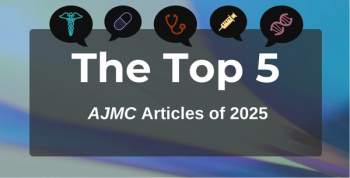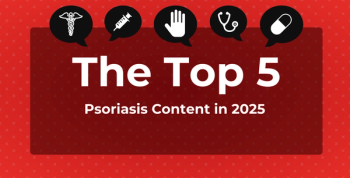
Dr Douglas Mann Discusses Novel CRISPR/Cas9 Findings in ATTR Amyloid Cardiomyopathy
Douglas L. Mann, MD, professor of medicine at Washington University School of Medicine in St. Louis and editor-in-chief of JACC: Basic to Translational Science discussed the first set of data reported on NTLA-2001, a novel investigative intravenous agent that targets the TTR gene and TTR protein levels, which have been shown to play a role in development of cardiac transthyretin (ATTR) amyloidosis.
Douglas L. Mann, MD, professor of medicine at Washington University School of Medicine in St. Louis and editor-in-chief of JACC: Basic to Translational Science discussed the first set of data reported on NTLA-2001, a novel investigative intravenous agent that targets the TTR gene and TTR protein levels, which have been shown to play a role in development of cardiac transthyretin (ATTR) amyloidosis.
These findings, “First-in-Human in vivo CRISPR/Cas9 Editing of the TTR Gene by NTLA-2001 in Patients With Transthyretin Amyloidosis With Cardiomyopathy,” were presented today during the Late-Breaking Science: Breakthrough Strategies in the HF Journey session at
Transcript
Can you describe the burden of ATTR amyloid cardiomyopathy and the unmet need for patients with this condition?
First of all, there are 2 forms of the ATTR cardiomyopathy. One is a genetic form, which is much rarer, maybe about 50,000 people worldwide. Importantly, there's an increased incidence in African Americans who have the specific mutation; about 1% to 4% of African Americans will have that mutation that can lead to it. More commonly, you can get TTR cardiomyopathy as you age. Typically, Caucasian males over the age of 60, 65 years can develop it. I don't think we really understand the worldwide distribution of that, only because I think we way underdiagnose it—we're just getting better at recognizing and diagnosing—and so I think there's a whole lot more out there that we don't recognize.
Before the development of drugs to treat this condition, it was a totally miserable disease to treat. There really were no medical therapies that would halt the disease or reverse the disease, and we were really just stuck with diuretics to try to lessen the amount of congestion in the lungs, the amount of pulmonary edema they had. Once drugs like tafamidis came along, we were able to actually treat people, keep them out of the hospital, and prevent deterioration in quality of life, as well as functional capacity.
So I think, within the last 5 years now, we've got therapies that will either halt or reverse the disease, and it's been a whole lot easier to treat.
Can you discuss the dramatic results that were seen in this phase 1 trial?
So just to clarify, what they did in the phase 1 study was to measure levels of TTR in the serum, and they showed remarkably a 90% reduction. And I think, most importantly, that reduction was sustained out at 4 to 6 months. So just 1 injection of this CRISPR/Cas9 technology was sufficient to lower the levels by 90%. What we would expect based on previous trials, particularly the tafamidis trial, is that if you lower the TTR levels that you will reverse the disease. And in the tafamidis trial, it was associated with improved mortality, reduced heart failure hospitalizations.
So one would predict, based on the decrease in levels, that we’d see improvement in functional outcomes, as well as hard end points such as hospitalization and death. They've got to do the study, right. There are very few side effects in the short-term study that they did. But I think to really clearly demonstrate that that reduction in TTR proteins is associated with improved outcomes, they're going to need to do a clinical study.
How does the gene editing portion of this therapy work, and can you discuss patient eligibility criteria for it?
The gene editing works by targeting guide mRNAs to specific regions of DNA and then cutting that DNA and then inserting new DNA that doesn't have any mutations in it. In their study, they only had 2 people with genetic mutations. The rest of them were the wild-type mutations, which don't have a specific genetic signature that we know of, so they were able to actually lower the levels in those people. So I think once you make the diagnosis of TTR amyloid and you can do that, either through a genetic screen or through biopsies, all those patients would be eligible for this therapy.
Newsletter
Stay ahead of policy, cost, and value—subscribe to AJMC for expert insights at the intersection of clinical care and health economics.








































